Thessaloniki gets ready for its metro launch in November
The underground rapid transit lines have been under construction for almost two decades due to various project delays
 TheMayor.EU logo
TheMayor.EU logo 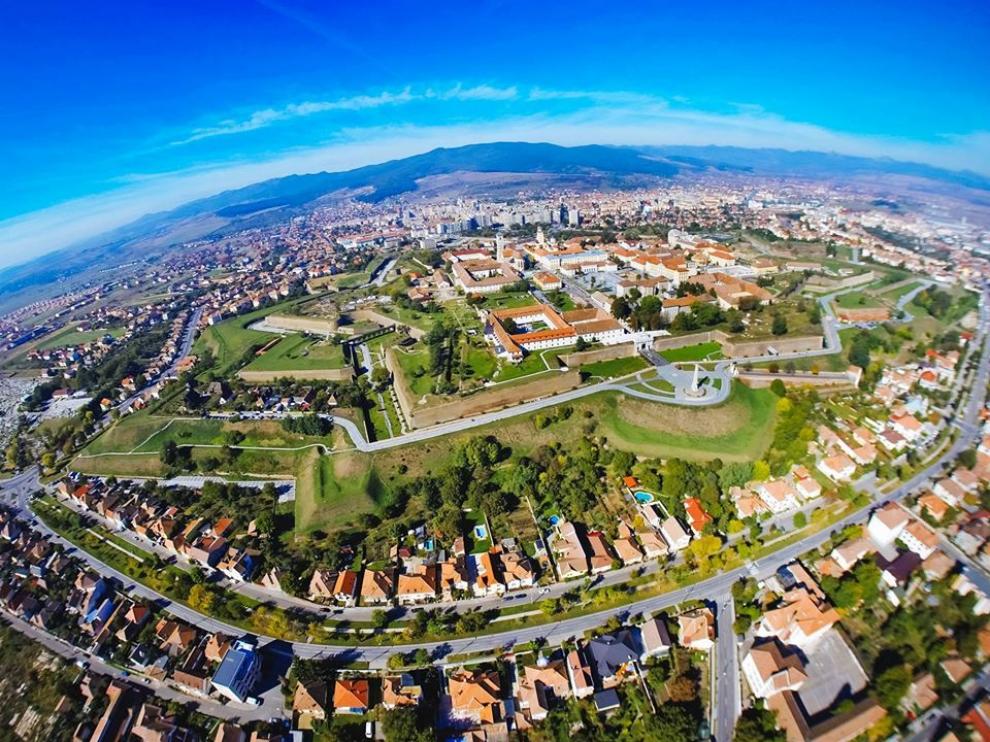
Located in the heart of Transylvania, the city of Alba Iulia boasts an urban tradition of almost 2000 years, since the time when the Romans discovered its potential. It had golden days in medieval times, it is the symbol of unification in modern times. Nowadays, it is the city with the largest fortress in Romania, Alba Iulia Fortress.
Alba Iulia tells the story of a city with a multi-millennial history, which has been the local capital since Roman times and is still today, also called the Other Capital of Romania. The strength of its cultural profile is also achieved by its exceptional cultural heritage, which needs to be rediscovered and retold to locals, as well as Romanian and foreign tourists.
Its European age begins with the Roman civilization that had a significant place and role here. The Romans founded two cities under the name Apulum (the Latin name of Alba Iulia). Each occupied a large area in the southern and eastern parts of the present city. The civil settlements of Apulum, formed around the Castrum of the 13th Gemina Legion, made up the most important urban center of Roman Dacia.
Alba Iulia was, for about 150 years, the political capital of the Principality of Transylvania (the period when Transylvania was quasi-independent), with the epicenter located in the Prince's Palace, within the fortress. This edifice lived its glory days during the time of the Principality of Transylvania when the fate of the region was directed from Alba Iulia.
After three centuries, Alba Iulia received the honor of being the city that gave Romania its identity! Here in 1918 the document by which Transylvania joined Romania was signed, which is why over the last century Alba Iulia has been regarded, as the symbolic capital of Romania. In this context, it recently received the tourist slogan „The Other Capital”. On 1 December 1918, Alba Iulia was the host of the most important event in the history of Romanians: The Great Union of Transylvania with Romania.
Alba Iulia has the most beautiful citadel in Romania: The Alba Carolina Fortress, which is the largest fortress in Romania, perfectly preserved for over 300 years.
Alba Iulia is the administrative center of Alba County in the west-central part of Romania. It is located on the Mureș River in the historical region of Transylvania. It is a medium-sized city with 74.000 inhabitants also known as “The Other Capital”. The surface of the municipality is 103,65 sq. km.
Alba Iulia based its sustainable development on attracting non-reimbursable funding. So far, during the 2007-2019 period, the municipality has managed to attract over 200 million Euros for Sustainable development projects in virtually all fields (including energy efficiency). The city is nowadays considered a good example at the national level in this field as well as in terms of efficient administration oriented towards the needs of the citizens, investors, and tourists.
The main priorities of the city are disseminated within the Integrated Strategy for Urban Development 2014-2023 are Smart, sustainable and inclusive economic growth; Sustainable tourism based on the rich cultural heritage; Reducing pollution and increasing energy efficiency; Developing a coherent, inclusive and efficient environment for local businesses; Developing mobility infrastructure and public services by using smart solutions; Transforming Alba Iulia into ”a more livable city” in order to reduce workforce migration towards Cluj-Napoca and Sibiu.
The strategic objectives contributing to the achievement of Alba Iulia's vision are 1. Alba Iulia – A SMART, accessible and coherent city; 2. Alba Iulia – A GREEN city with efficient public services; 3. Alba Iulia – A COMPETITIVE and CREATIVE city; 4. Alba Iulia – A European CULTURAL and TOURISTIC OBJECTIVE.
The economic background of Alba Iulia is typical of the post-communist transition from a planned economy to market capitalism, with 97% of all companies privately owned. The heavy industry was replaced by new economic agents – local businesses and foreign investors. The local economy is service-oriented with a large number of family-owned small businesses and with significant representation of the light industry mainly dominated by foreign investments.
One of the most important growing sectors in Alba Iulia is tourism. The number of tourists who use the accommodation in the city has increased by 250% since 2011.
The secondary sector in Alba Iulia mainly comprises food industries, wood processing, light manufacturing, and fine ceramics. Some companies in those sectors have been traditionally based in the city and benefit from a specialized workforce. The industrial area of Alba Iulia occupies 14% of the city territory.
Alba Iulia is one of the cities in Romania which attracts the most working commuters from surrounding rural areas.
According to their importance, employment by sectors: Agriculture & Forestry: 1,5%; Industry: 27,3%; Constructing field: 7,9%; Commerce, hotels and restaurants (tourism): 17,9%; Transport & telecommunications: 7,3%; Financial activities & real estate transactions: 2,8%; Public administration: 13,1%; Educational system: 6,8%; Health system: 6,4%; Other types of activities: 9,0%. The role of tourism has increased substantially in the last decade.
Specific products, crafts, services of the city known nationally or/and internationally are porcelain (2 of the largest porcelain factories in the world are situated in Alba Iulia). The future key strategic sectors of economic activity: tourism; IT; food-drinks industry; porcelain.
At the county level, there are 18 companies with a turnover higher than 20 million euros/year. There is an important growth potential in the automotive industry and in wood processing as Alba County is one of the most important wood providers in Romania and 33.1% of the county territory is covered by forests.
Alba Iulia is the city with the highest absorption of European and other non-reimbursable funds per capita in Romania - more than 200 million euros were invested in development projects in the last 10 years (considering that the local budget dedicated to investments is just about 2,5 million euros per year).
Today the city ranks first among county capitals in attracting EU funding/capita according to the report of the World Bank. The financial performance of Alba Iulia Municipality is recognized by credible institutions.
According to the rating obtained, “Alba Iulia Municipality is an institution with considerable credibility for all investors and has proved good management in attracting European funds. Alba Iulia Municipality has a strong institutional capacity for planning urban development and attracting financing resources for urban policies and projects.
During the December 2016 - end of 2019 period, Alba Iulia Municipality implemented the project „Alba Iulia Smart City 2018”. This project was initiated as a national pilot project by the state government (Ministry of Communications and Information Society) in partnership with Alba Iulia Municipality and private companies.
Over 45 companies expressed their interest to invest in the implementation of smart technology solutions in Alba Iulia (to name just a few: Orange, Microsoft, Siemens, Philips, Cluj IT Cluster, Kaufland, Pony Car Sharing, CertSign and local companies like White City Code, Vichi Farm Pharmacy, etc.).
Cooperation protocols were been signed with most of the companies and the pilot project was due to end in 2019 however it still continues today with some of the companies. A total of 106 solutions were contracted during the 2017-2019 period, making it the first initiative of this kind at the national level. From those 106 solutions, 60% were implemented and emulated results regarding the improvement of the quality of life in Alba Iulia.
Source: Albe Iulia Municipality
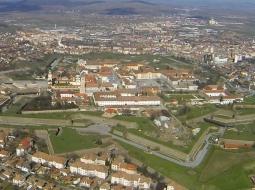
The Alba Iulia bastion fortification is the largest fortress in Romania, which has been standing for more than 300 years. The fortress is the place where you can travel over two millennia back in time, strolling, among vestiges of three fortifications, dating back to as many different epochs. In other words, every fortress built here has embraced a previous one: The Roman castrum, the medieval fortress, and the Alba Carolina Citadel.
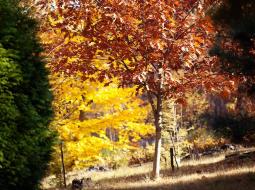
Tourists who want to relax away from the urban agglomeration can opt for Dendrological Park on the outskirts of Alba Iulia. The "Corner of Heaven" at the base of Mammoth Hill is unique in Romania precisely due to its arrangement, in the middle of a forest. Access to Dendrologic Park: from the national road leading from Alba Iulia to Zlatna, left before Micesti, on Varese Street, then right on Nazareth Ilit Street and then again left, on Popii Valley Street.
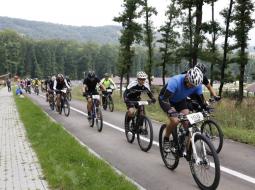
For more movement, the tourists can choose the Mammoth Transalpina, which is one of the most spectacular bike lanes in Romania. Just a few kilometres from the center of Alba Iulia, on Mammoth Hill, the track measures at just over 5 kilometres.
The route connects, through the forest, two of the city's districts. The difficulty of the runway is a medium-level one: climb a route on about 2 kilometers and descent on 3.5 kilometers.
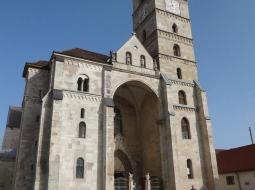
It is the oldest cathedral in Transylvania that continues to operate and the oldest building-raised at the beginning of the 13th century, in Alba Iulia and in Alba County. The edifice, considered the most valuable monument of Romanesque architecture in Transylvania, is inscribed in the Route dedicated to the European Romanesque architectural heritage, "Transromanica".
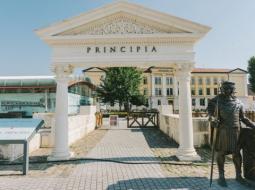
Would you like to transpose yourself for a few moments into the life of the Roman soldier? If so, then you must visit the Roman Museum Principia, located in the Fortress Square. It's where you can dress the roman soldier's complex equipment, which has been reconstructed. You can also meet the reenactors of The Apulum Guard here.
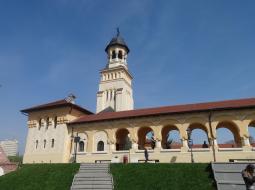
This is the Cathedral in which King Ferdinand and Queen Maria were crowned, as sovereigns of Greater Romania, on 15 October 1922. The Orthodox Archdiocese of Alba Iulia is also located here.
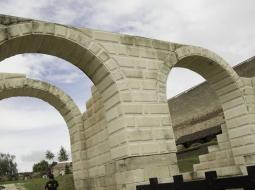
A tourist trail, 2 millennia of history, 3 fortifications. This is how the location of one of the largest fortresses in Romania could be described as it offers a complex of experiences for visitors - the Route of the 3 Fortifications. It is located in the southern and southeastern part of Alba Iulia Fortress, with the conformation of an open-air museum in most of it.
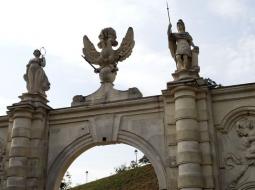
It crosses the Fortress from sunrise to sunset. In other words, it crosses the six gates of the fortification, through the Union Hall, the National Museum of Unity, the Palace of the Principals of Transylvania, and through the right of the two cathedrals, the Roman Catholic Cathedral and the Coronation Cathedral. A good opportunity to decipher the architectural style and sculptural decor.
From the Fortress's Ditch Trails, you can also take advantage of your walk. A lap of the ditches is 2.7 kilometres. You will notice that the four sides, east, north, west, and south are almost equal to each other in length and that they offer unexpected surprises throughout.
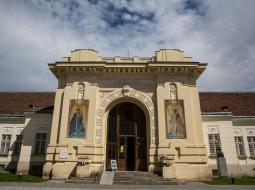
The work of the Grand National Assembly was held here on 1 December 1918. You can also discover his story using the QR plate located in front of the building in 4 languages.